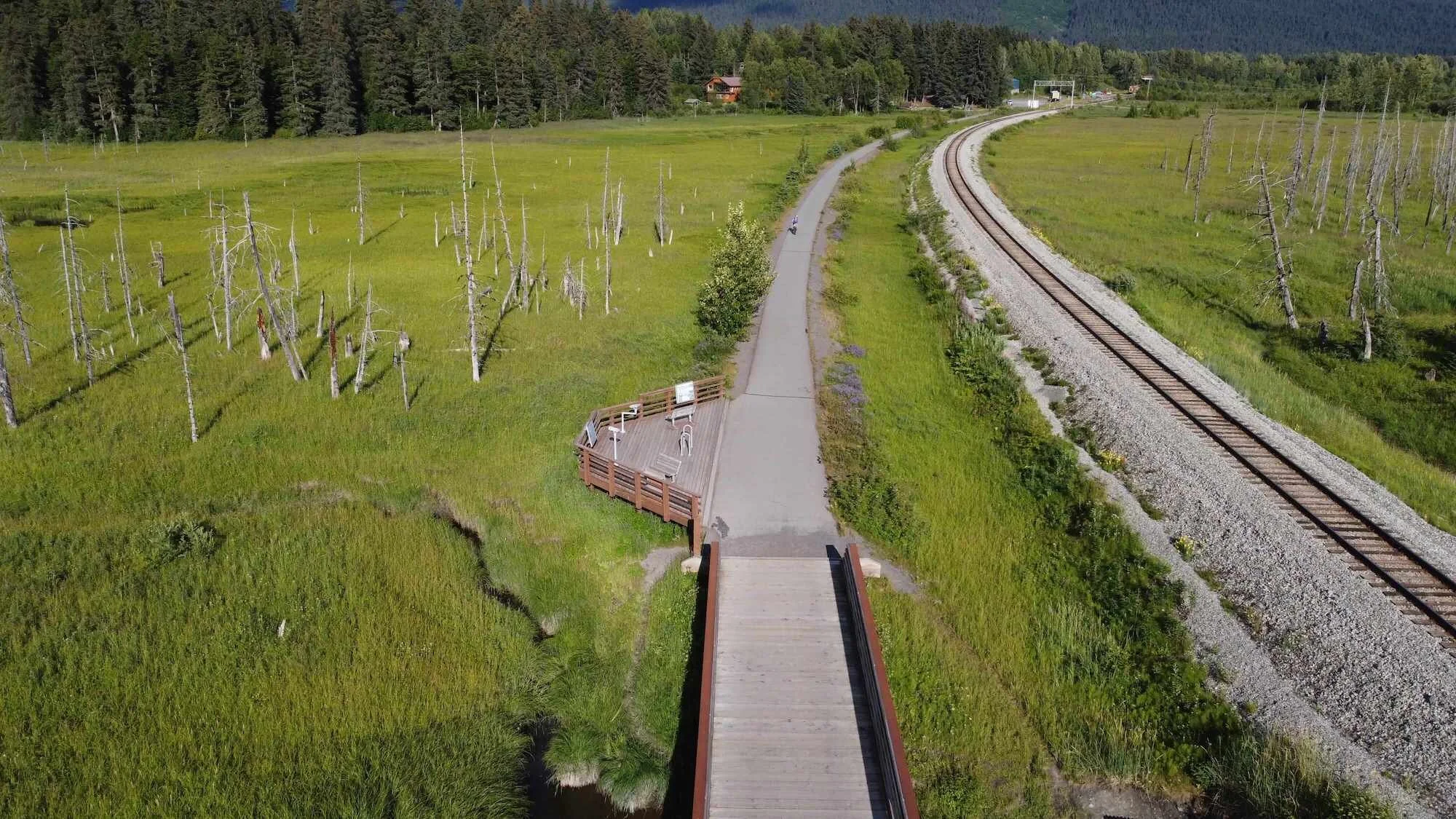Explore Seward Highway
Scenic By-Way
What is there to do from Anchorage to Girdwood? The 45-minute drive from Anchorage to Girdwood along the Turnagain Arm of Cook Inlet is one of America’s greatest drives. The Seward Highway connects Anchorage to the smaller communities of Girdwood, Seward, and Kenai. It is a National Forest Scenic Byway and one of 15 roads in the United States that have been designated as an "All-American Road”. The Turnagain Arm portion of the drive is the most dramatic with mountains on both sides of the inlet that soar to an incredible 5000 feet. There's a good chance of viewing dall sheep and eagles or even the possibility of spotting one of the 350 Beluga whales that call Cook Inlet home.
Home to Monstrous Tides
Turnagain Arm has the second largest tidal swing in North America. It can see tidal ranges as large as 40 feet and is only second to Bay of Fundy in Canada. These incredible tidal swings also create another magnificent feat of nature, the BORE TIDE. A bore tide happens when rapidly rising tidewaters are forced up, forming a raised front and creating one, big WAVE. The Turnagain Arm Bore Tide is one of the largest in the world and can climb to 6-10 feet and travels 10-15 miles per hour. Turnagain Arm’s geographical features make it unique. For starters, it is the northernmost bore tide in the world and the only one in the United States. Second, it is the only bore tide boarded by high-rising mountains, providing an incredible backdrop to the awesome wave. Third, the narrow, shallow gently sloping floor of the Turnagain Arm allows the big wave to build slowly.
Dangerous Mudflats
As you travel the 45 miles South along Turnagain Arm, you will see people surfing the Bore Tide, wind sailing, and paddle-boarding. However, this is not for the inexperienced. The land under the water, the mudflats, is unique but very dangerous. Very small silt particles are laid down in a delicate, loosely oriented pattern by waters that carry them into the inlet. When these particles are disturbed by your foot, they resettle into a more tightly packed arrangement, making extraction very difficult...think of quicksand. Many people have lost their lives after getting stuck in the mud and drowning from the rising tidal waters.
History
Turnagain Arm was named by William Bligh of HMS Bounty fame. Bligh served as Cook's Sailing Master on his third and final voyage, the aim of which was the discovery of the Northwest Passage. Upon reaching the head of Cook Inlet in 1778, Bligh was of the opinion that both Knik Arm and Turnagain Arm were the mouths of rivers and not the opening to the Northwest Passage. Under Cook's orders, Bligh organized a party to travel up Knik Arm, which quickly returned to report Knik Arm indeed led only to a river.
Afterward, a second party was dispatched up Turnagain Arm and it too returned to report only a river lay ahead. As a result of this frustration, the second body of water was given the disingenuous name "Turn Again". Early maps label Turnagain Arm as the "Turnagain River".
Difficult Driving
The Seward Highway is the only road out of Anchorage to the smaller communities in Southcentral and the Kenai Peninsula. It is extremely busy with traffic in the summer as campers and boats make their way to Whittier, Seward, and Kenai. In addition, people will routinely pull over to take pictures and view wildlife. In May, expect heavy traffic past Girdwood as people from Anchorage come down for Hooligan fishing.
Most of the way from Anchorage to Girdwood is a two-lane highway but there are some passing zones to get around slower traffic after Bird and Indian. You may also see people climbing rock or ice along the route closer to Anchorage. These climbs all exist directly south from Anchorage and north of Girdwood. However, both are quite dangerous as the belays are sometimes within several feet of oncoming traffic. In addition, loose rocks and debris can be hazardous to cars traveling on the highway. In December 2019, SouthCentral Alaska experienced a 7.2 earthquake and since then the rock cliffs along the Seward Highway appear more unstable with large fractures and increased rock slides.



Seward Highway is a National Forest Scenic Byway and one of 15 roads in the United States that have been designated as an "All-American Road.”